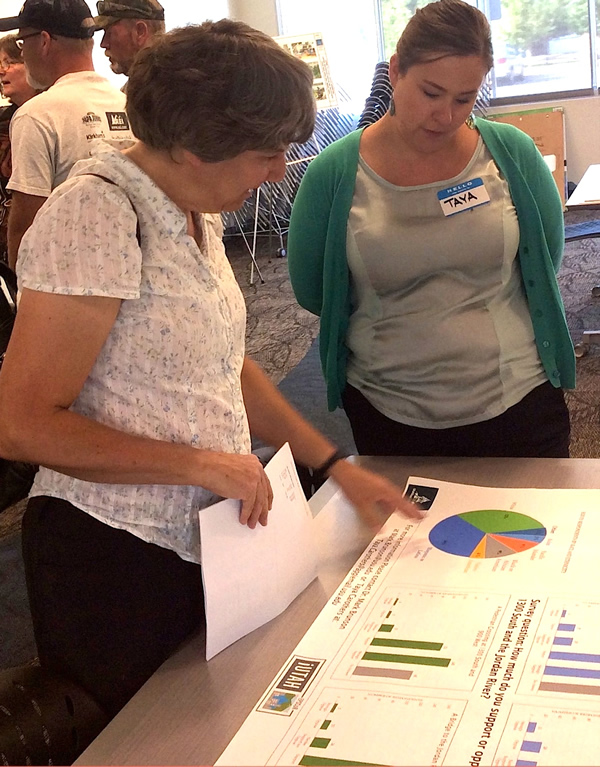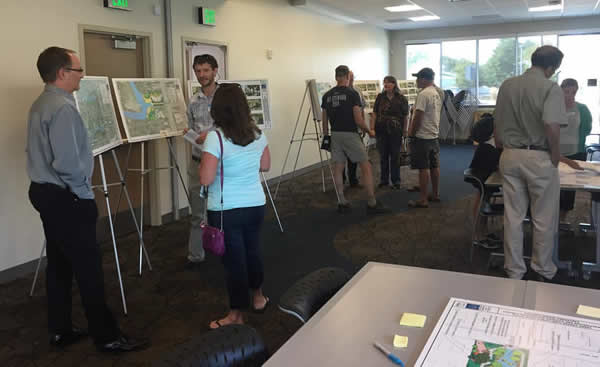Diversity Enhancement News
April 6, 2018
Outdoor Learning Reaches a Larger Classroom
The benefits of outdoor learning have been in the news for the past few years. Studies have found that going outdoors to learn science connects students and teachers to the natural environment. It reaches these students in new and different ways and gives them real world examples of what they are learning about in their classrooms.
Given the aim of the iUTAH project to engage and build a water-wise citizenry, it seemed only fitting that the project partnered with the Natural History Museum of Utah’s Taking Learning Outdoors (TLO) program. Over the six years that the TLO program was active in Utah schools, it was able to equip 98 K-12 teachers with resources, information, and professional insight that has helped them bring their local watershed into their classrooms.
Supported by iUTAH and facilitated by NHMU, teachers in TLO cohorts participated in a year-long series of workshops led by science and education experts from around Utah. Teachers examined their local watershed and learned how to most effectively incorporate these natural science into their curriculum. These teachers then brought what they learned into their classrooms, helping the program to reach over 12,000 students. When asked about their experience, one teacher said, “I feel that my confidence has increased as a result of realizing that science is all about using observations to describe and define our natural environment. Observations cannot be wrong. They can become more specific, defined and refined over time but they aren’t wrong. This helped me to be less afraid of science and love it more.”
A lasting legacy of the TLO program is the curriculum and insights available on NHMU’s website. Now, these lessons have been made available to encourage teachers to continue to take their classes outside by providing resources and lesson plans to help teachers feel more comfortable teaching outdoors. These lessons even include resources developed by Nancy Bo Flood, the author of Water Runs Through This Book, a book supported by iUTAH and given to many libraries, schools, and students throughout the state.
While the TLO program has ended its formal teaching program, banners now hang in 50 schools across the state that participated in the program. These banners encourage use of the lessons developed over the past five years. They also remind TLO teachers to share what they learned, helping their students to take an active interest in their watershed in a multi-disciplinary way.
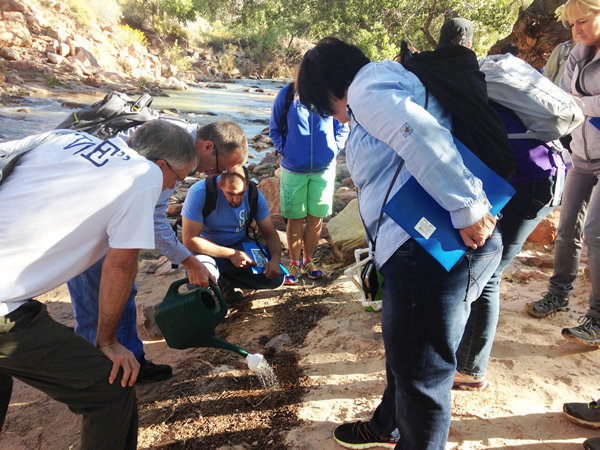
March 14, 2018
USU's Nancy Huntly Named Ecological Society of America Fellow
iUTAH researcher Nancy Huntly, professor and director of the Ecology Center at Utah State University, have been named a Fellow of the Ecological Society of America. She will be one of 28 honorees formally recognized by the ESA, the world’s largest community of professional ecologists.
A media release provided by USU’s science writer Mary-Ann Muffoletto said that the “ESA lauded Huntly’s ‘foundational research on herbivory, coexistence and human ecology,’ as well as her commitment to and innovation in both science communication and the application of ecological principles to the management of natural resources.
‘Nancy is an outstanding scientist, professor and administrator,’ says Maura Hagan, dean of USU’s College of Science. ‘Her contributions to the establishment and leadership of the USU Climate Adaptation Science program epitomize her innovations in science communication, as well as her scholarly research achievements. Nancy is an exceptional role model to her students and to the young faculty she mentors.’ “
Additionally, “Throughout her career, Huntly has been a key advocate for students and faculty from underrepresented groups. She’s a major contributor of the NSF-funded iUTAH project’s education, outreach and diversity efforts in areas of workforce development and diversity. Huntly also assisted with the establishment of a USU student chapter of SACNAS, the Society for Advancement of Hispanics/Chicanos and Native Americans in Science.
As chair of Science Unwrapped, Huntly oversees a six-person committee and dozens of volunteers, who present community-wide science outreach events, which draw some 500 attendees, ranging in age from preschoolers to senior citizens, to USU’s campus each month during the academic year.”
Press: USU Today | The Herald Journal | Deseret News

February 14, 2018
Traineeship Students Gain Real Skills
There are many internship opportunities for students at all levels found throughout the Utah educational system. iUTAH traineeships offered between 2013 and the present provided something different. “We knew we had students on the research-oriented campuses in the state that could benefit from gaining skills that were transferrable outside of academia,” said Ellen Eiriksson, iUTAH’s education, outreach, and diversity coordinator. The Traineeship Program is a workforce development initiative developed to provide students with skills that transfer beyond the academic realm, and that contribute to a strong Science, Technology, Engineering, and Math (STEM) trained workforce in Utah.
“Not all undergrads go on to higher degrees or careers in academia,” said Eiriksson. “Traineeships are meant to give students skills that they can take directly to the workforce with them.” Trainees were paired with faculty and other mentors on campuses to gain experience in their laboratories or other work settings. As undergraduates, trainees served as integral members of research teams, learning new skills, and even serving as near-peer mentors, passing those skills onto incoming trainees.
The average student was engaged with the program for one year, although this amount of time varied depending on research needs. Students benefited from a team environment, training alongside graduate students and other near-peer mentors. Below are some examples of the many interesting projects that they were involved in:
- Linking sensor networks to science through ecoinformatics
- Integrating data and models for hydrologic applications
- Exploring green roof food production and green infrastructure water use strategy
- Social science data management
- Quantifying precipitation effects from the Great Salt Lake
One former trainee, Phil Suiter, currently works as a civil engineer for Ogden City. He said that he “enjoyed working in the iUTAH trainee program because it opened my eyes to all the variety of work performed for research studies,” adding that the program “helped me learn the importance of the planning and preparation needed prior to field work which has helped me be more effective as I visit my infrastructure improvement sites.”
Another trainee, Natasha Griffin, worked on the GAMUT project in the Provo River, which she says "helped me to gain experience in doing fieldwork and collaborating with other researchers, which made me more confident about pursuing my own projects. I'm now working on two publications of my own as I finish my senior year, after which I'll head to graduate school in aquatic microbial ecology."
From a faculty perspective, mentors appreciated that the program was not limited to a summer session, so students were available for as long as they were needed. One mentor said “we enjoyed the consistency and enthusiasm that traineeships brought to the lab. The trainees always wanted to learn new skills and were always eager to help in the field and lab."
“As an iUTAH trainee I was responsible for installing, maintaining, calibrating and troubleshooting a wide variety of environmental sensors and equipment,” said Brett Boyer, trainee from 2015 – 2017. “I grew confident that with time and effort I could become an expert on a given piece of equipment and use my knowledge to solve any issues that might come up. I also worked on a challenging project developing a self-contained sensing and datalogging system that greatly increased my programming and troubleshooting experience.” These skills helped Boyer secure a position as a control systems engineer, working with heavy electrical equipment and programming controllers for a gold mining project in Mexico.
The iUTAH traineeship has involved 31 students to-date, many of whom are now employed in water-related technical fields, or continued their educations in graduate school both in Utah and neighboring states. These students benefited from access to iUTAH's diverse range of research and cross-institutional collaboration.
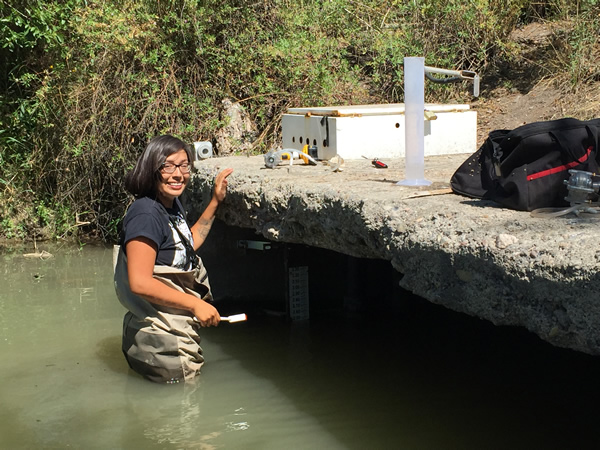
April 14, 2017
iUTAH Donates 235 Water Books to Area Libraries
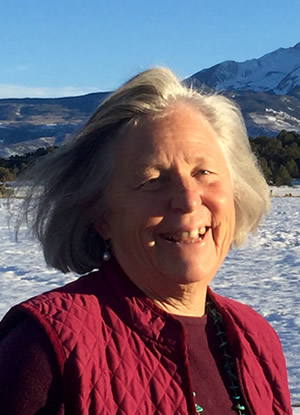
Each year in early May, Utah dedicates a week to public awareness and involvement in water issues, both locally and globally. This year, iUTAH is partnering with the Intermountain Section of the American Water Works Association (IMS-AWWA) in celebration of 2017 Utah Water Week (UWW) on May 7-13. Among the events and activities taking place, UWW brings water-related books, and occasionally their authors, to local libraries and schools across the state. This year, the award-winning Water Runs Through This Book is one of two UWW Library Books that have been chosen to educate people on the importance and scarcity of water. The production of Water Runs Through This Book by Nancy Bo Flood was supported by iUTAH to strengthen and promote an inclusive, diverse, water-wise community in Utah. Copies of the book are being donated to 210 libraries in Utah, and 25 libraries in southern Idaho.
Ellen Eiriksson, iUTAH Education, Outreach and Diversity Coordinator, said “iUTAH is thrilled to bring author Nancy Bo Flood back to Utah to help celebrate Utah Water Week and to be partnering with a variety of community, institutional, and education partners across the state, to share the book's view of water.” A partial list of the libraries and schools Bo Flood will visit throughout Utah include:
- Emery and Grand County, UT– May 2 - 5
- Weber County Libraries – May 9 - 10
- North Logan Library, North Logan UT– May 10, 7 p.m.
- Edith Bowen Laboratory School – May 11
- Logan Library, Logan UT– May 12, 3 p.m.
“This book captures the spirit of our connection to water, while also addressing and celebrating the different ways people worldwide interact with this resource,” said Eiriksson. “Nancy will be bringing this discussion to audiences state-wide, asking people to reflect on and celebrate their connection to water, while also examining on how we can be better stewards of it.” Bo Flood will also speak at the Water Education Awards Banquet honoring the winners of the Utah Division of Water Resources Young Artists Poster Contest, an event attended by 4th grade students from around the state, and their families, and teachers.
"I have been a professional in environmental education since 1972 and have seen many water education books,” said Barbara Middleton, Friends of the North Logan Library board member. “What I like about this book is the international focus, the images and the succinct clarity of how water runs through our lives."
iUTAH’s partner, Utah Water Watch, will present various citizen science opportunities for water quality monitoring throughout the state during Water Week. Please check out the 2017 Utah Water Week website for a complete list of activities and events.

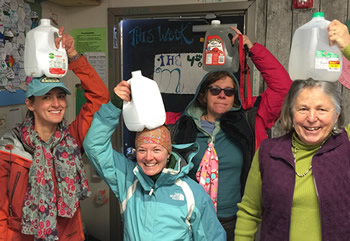
December 6, 2016
Engaging Neighborhoods in Survey Results
Last summer, nearly 400 people on Salt Lake City’s west side were asked about their connections to the Jordan River and the parklands alongside the river. Bilingual surveys were distributed in public places such as grocery stores, libraries, parks, and community events. Students involved in iUTAH Undergraduate Research Fellows (iFellows) Program, Cynthia Elliott and Luis Vidal, conducted the survey using iPads and interacting directly with residents.
Mark Brunson, professor in Utah State University’s Department of Environment and Society and the USU Ecology Center, and Taya Carothers, PhD student at USU, jointly developed the survey. They were aided in this process by collaborators in Salt Lake City’s open space lands program, Lewis Kogan and Tyler Murdock; and the design consultant for the Three Creeks Confluence project.
“As iUTAH’s director of education, outreach, and diversity, I have long wanted to do something that engaged the diverse neighborhoods on Salt Lake City’s west side and could be used to benefit people in those communities,” said Brunson. The idea for the study started at meeting led by Brian Tonetti, the executive director of the Seven Canyons Trust, held in fall 2015. While talking about how the Glendale neighborhood felt about daylighting (freeing buried rivers and streams) that currently run through Salt Lake City, it became clear that getting input from a broad diversity of neighborhood residents was challenging. This seemed like an opportunity to combine Carothers’s research on environmental justice and water with more general questions that might serve a variety of community projects in the area, such as the Glendale project.
After the survey results were collected and data formulated, iUTAH’s cyberinfrastructure team used visualization tools to help make the information accessible and easy to understand. This online tool, the survey data viewer, is publicly available and provides a simple interface to communicate the results of surveys to stakeholders, participants, and the general public. Information on this process can be found here. This information has been useful in presentations to make the results more interesting and applicable to specific groups.
“We found it to be extremely helpful because it is very visual,” said Carothers, who is also an iUTAH Graduate Research Assistant. “As a visual representation, it shows people what the data look like, by the size of the circle as a heat map, and then people can really visualize support or concern about a specific topic.“ It has been used in meetings with neighborhood council groups to show the data and to answer questions. This audience often lacks background information about the survey and mainly wants to know how it relates to them personally. The data viewer allows the presenter to look up answers to the specific area-related questions that people have, and use it as a tool to start a discussion.
“As a researcher who studies human-environment interactions, it’s been fascinating to learn about the different ways that individuals are connected to the Jordan, a very urban river that has a reputation more for impaired water quality than for recreation opportunities,” said Brunson. The link to the data survey has also been sent to specific stakeholders for use in proposal writing for future grants and research. The weed puncture vine, a plant covered with spines sharp enough to flatten bicycle tires, was identified by SLC residents as one of their larger concerns along the river and parkway. In response to this concern, the Open Space Lands program, Natural History Museum of Utah, and Brunson are collaborating on a proposal that could lead to a new citizen science project to address this issue directly.
This project demonstrates the multi-dimensional collaborations and partnerships that iUTAH, an interdisciplinary research and training program aimed at strengthening science for Utah’s water future, fosters in the state.
For downloadable article, along with quick reads version, visit the full article…
